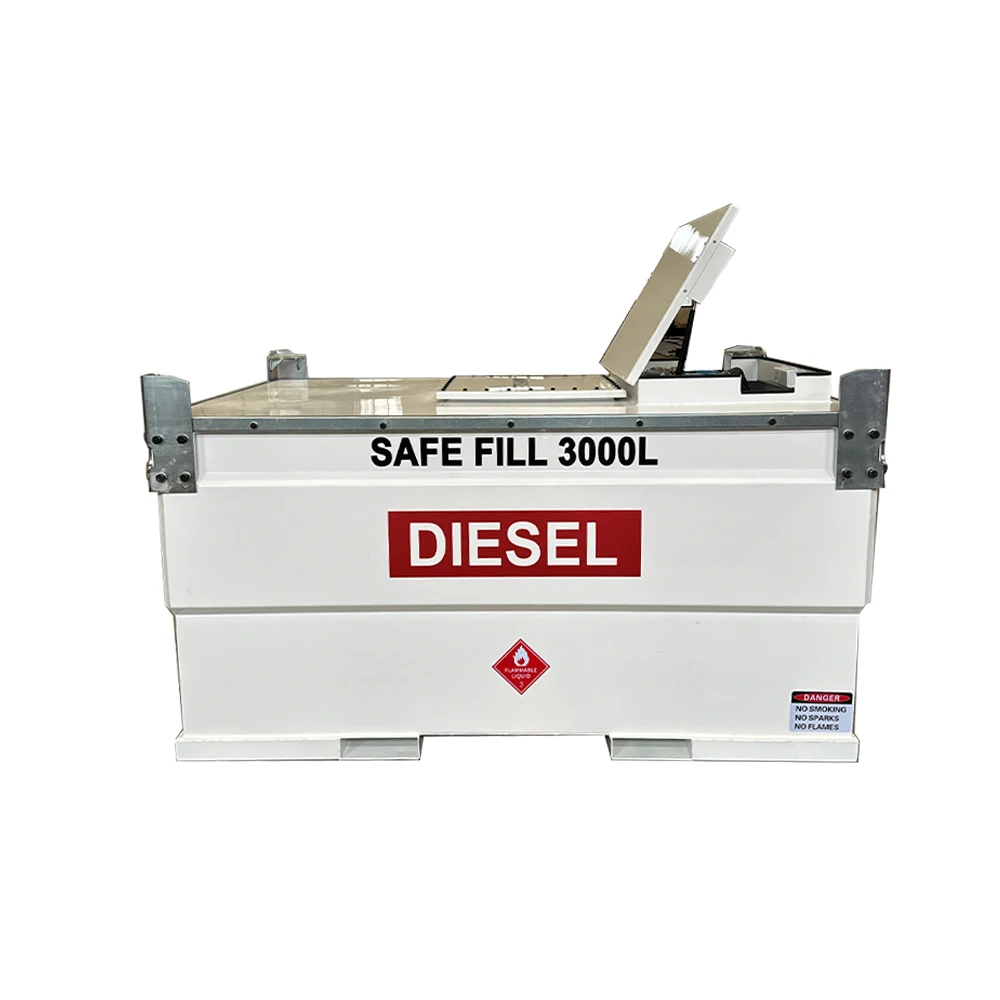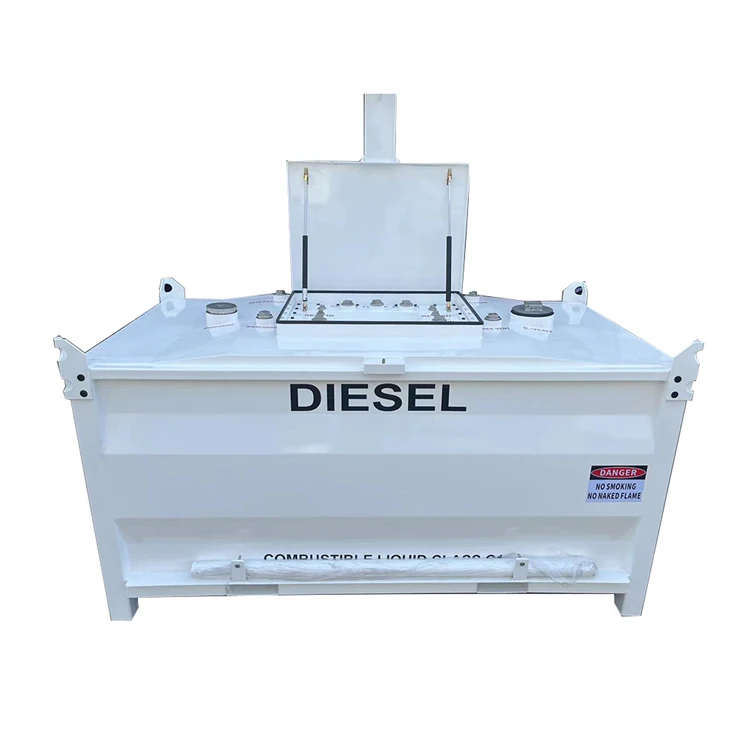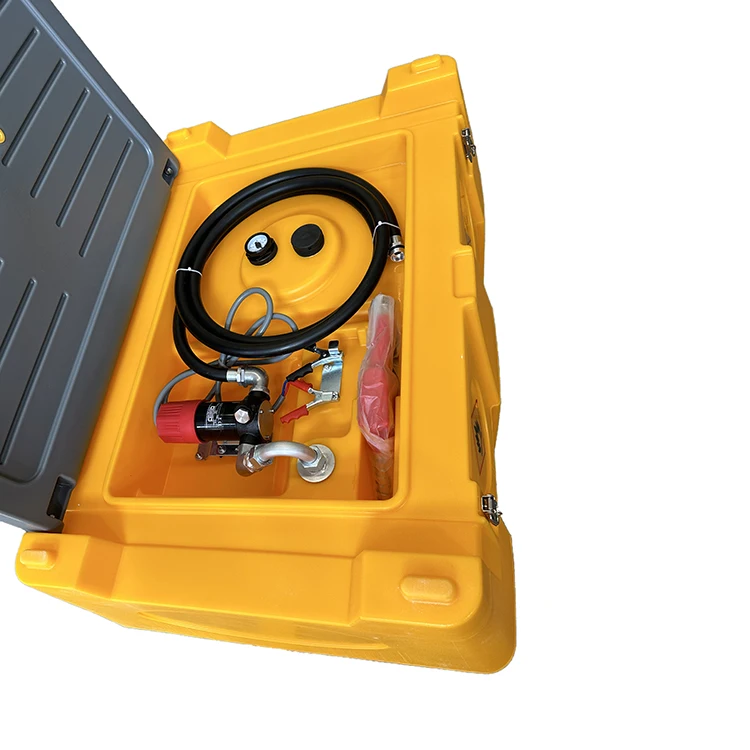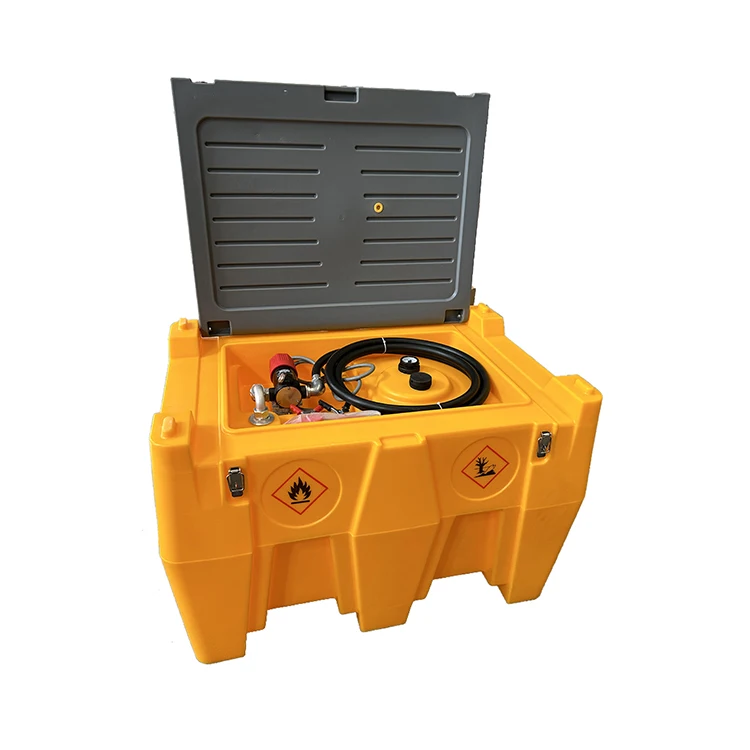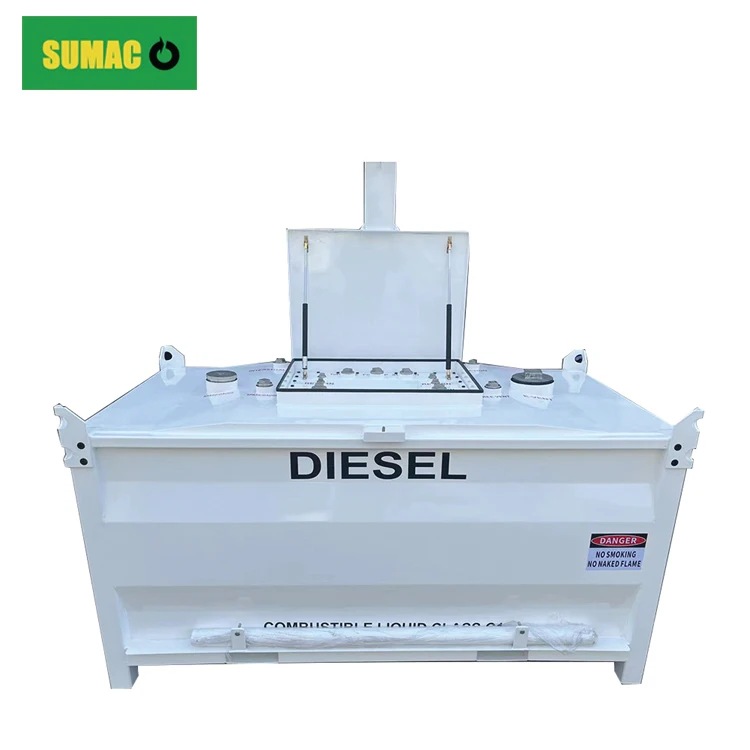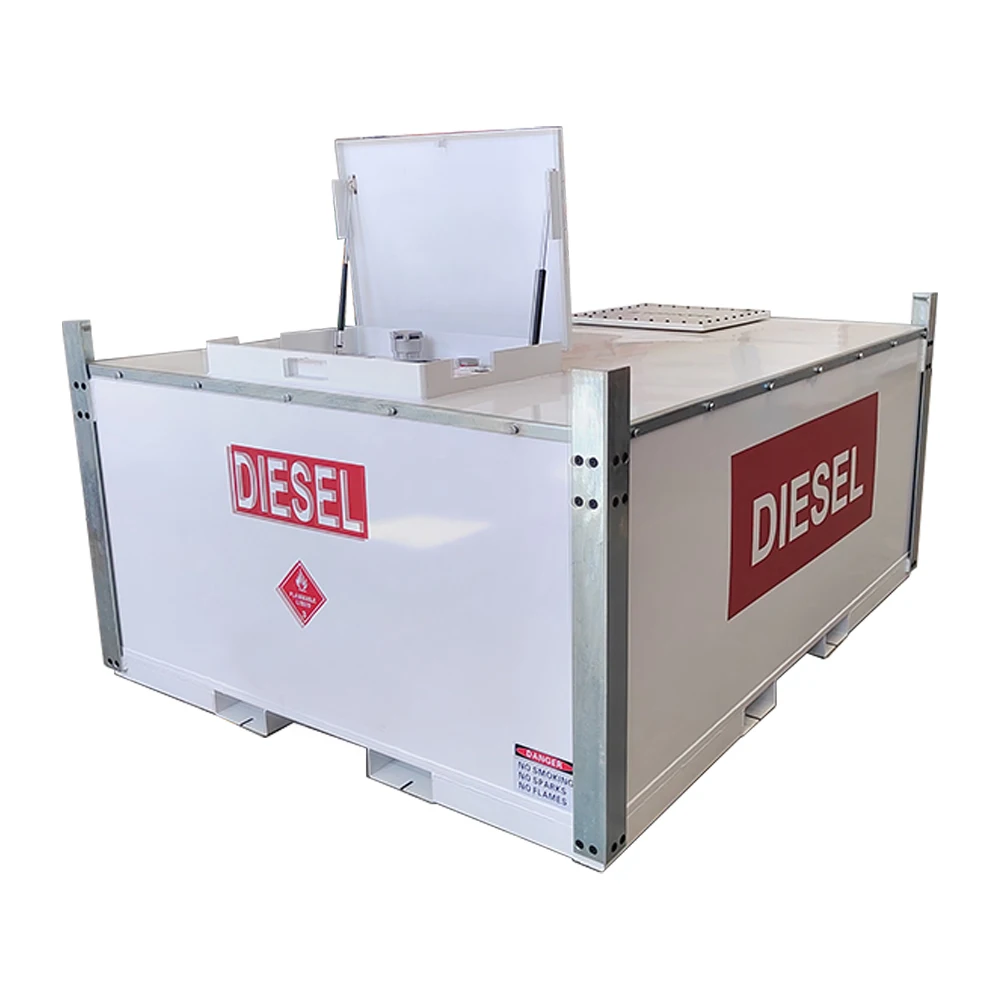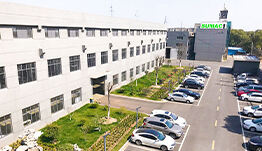Double Wall Metal Steel Diesel Fuel Cube Tank Sale For USA
Structural design
Double-wall structure: The tank adopts a double-wall design, consisting of an inner tank and an outer tank, with a gap space in the middle. This structure provides additional protection and enhances the safety of the tank. Even if the inner tank leaks, the outer tank can also play a containment role to prevent diesel from leaking into the surrounding environment.
Cubic shape: Usually in a cubic shape, compared with traditional cylindrical oil tanks, cubic tanks are more efficient in space utilization and can better adapt to some specific site layout requirements, such as installation in work areas with limited space or building corners.
Material selection
Metal steel: The tank body is mainly made of metal steel, such as carbon steel or stainless steel. Carbon steel has high strength and good wear resistance, and can withstand the storage pressure of diesel and various stresses in daily use; stainless steel has better corrosion resistance and is suitable for environments with high requirements for corrosion resistance.
Features and advantages
High safety: The double-wall structure greatly reduces the risk of diesel leakage and reduces safety hazards such as fire, explosion and environmental pollution. At the same time, the high strength of metal steel can also improve the compression and seismic resistance of the tank, making it stable under adverse weather conditions or geological conditions.
Good corrosion resistance: metal steel undergoes special surface treatment or coating processes, such as galvanizing, painting, powder coating, etc., which can effectively resist corrosion from diesel and moisture, oxygen, acid and alkali in the external environment, and extend the service life of the tank.
Easy to transport and install: The shape of the cubic tank is regular, which is convenient for lifting, handling and installation. Some small double-walled metal steel diesel cubic tanks can be transported to the site as a whole and directly installed and debugged; for large cubic tanks, modular design can also be adopted and assembled on site, reducing installation time and cost.
Scalability and flexibility: multiple cubic tanks can be combined and arranged as needed to achieve different storage capacity requirements. In addition, cubic tanks can also be used in conjunction with other equipment such as refueling machines, oil pumps, filters, etc. to form a complete diesel storage and supply system.
Application areas
Industrial field: used for diesel storage in factories, mines, construction sites and other places, providing fuel support for various mechanical equipment, generators, etc.
Transportation: It can be used as a diesel reserve tank for automobile transportation companies, logistics centers, gas stations, etc. to ensure a stable fuel supply for vehicles.
Agriculture: Farms, agricultural cooperatives, etc. can use double-walled metal steel diesel cubic tanks to store diesel required for agricultural machinery to meet the oil demand of agricultural production.
Emergency backup power supply: In some places where backup power is required, such as hospitals, data centers, communication base stations, etc., it is used to store diesel and provide fuel for diesel generators to ensure power supply in emergency situations such as power outages.
Maintenance and management
Regular inspection: It is necessary to conduct regular appearance inspections of the storage tank to check whether the tank body has signs of damage such as deformation, corrosion, cracks, etc.; check whether the connection parts are loose and leaking; and also check whether the leak detection system is operating normally.
Cleaning and maintenance: Clean the tank regularly to remove impurities, moisture and sediment, etc. to ensure the quality of diesel. In addition, the surface of the tank body needs to be cleaned to maintain the integrity of the coating and prevent corrosion.
Leakage treatment: Once a leak is found in the storage tank, measures should be taken immediately to deal with it. First, cut off the power supply of related equipment, stop the flow of diesel, and use appropriate tools and materials to seal the leakage point; at the same time, collect and clean up the leaked diesel to avoid pollution to the environment.
https://www.sumacycling.com/
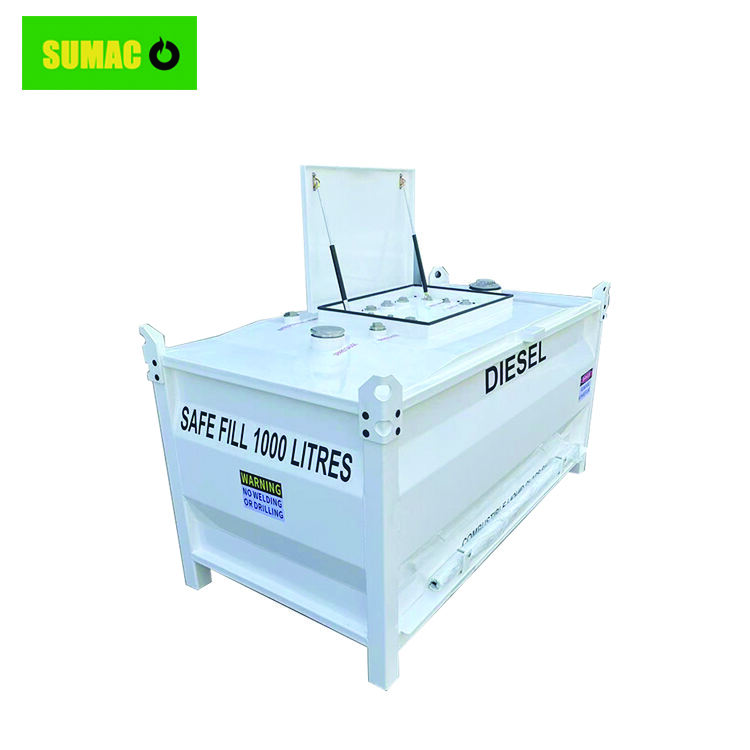
Recommended Products
Hot News
-
Double wall portable diesel gasoline cube tank with pump sale for Mauritius
2024-11-11
-
Double Walled Portable Fuel TransferCube Tank Ship To Spain
2024-11-07
-
Shipping of portable aviation fuel tank with pump
2024-10-12
-
Carbon steel diesel fuel cube tank ship to USA
2024-11-14
-
Carbon steel cube tank with pump
2024-11-13
-
Fuel Transfer Tank Cube Stationary Double Walled Diesel Storage Tank Sale For Spain
2024-11-06
-
251 US Gallon 552 Gallon Fuel Cube Transfer Tank Sale For USA
2024-11-05
-
251-2000 Gallon Fuel Cube Transfer Tank Sale For Grenada
2024-11-01
-
552 Gallon portable fuel dispenser with tank sale for USA
2024-10-30
-
Mobile fuel tank with pump sale for Spain
2024-10-22
 EN
EN
 AR
AR
 BG
BG
 HR
HR
 CS
CS
 DA
DA
 NL
NL
 FI
FI
 FR
FR
 DE
DE
 EL
EL
 IT
IT
 JA
JA
 KO
KO
 NO
NO
 PL
PL
 PT
PT
 RO
RO
 RU
RU
 ES
ES
 SV
SV
 TL
TL
 ID
ID
 LT
LT
 SR
SR
 SK
SK
 SL
SL
 UK
UK
 VI
VI
 HU
HU
 TH
TH
 TR
TR
 MS
MS
 GA
GA
 IS
IS
 KA
KA
 HT
HT
 KK
KK
 UZ
UZ


